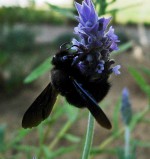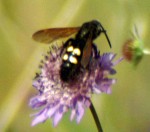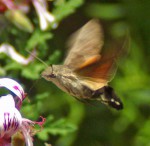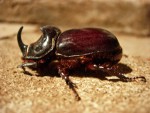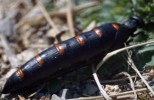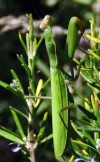The Laguna de Medina Sidonia is situated approximately 10kms south-east of Jerez de la Frontera, in Cadíz Province. It is a vast lake, or lagoon, which covers an area of some 120 hectares and forms a part of a Reserva Natural . As with other lagoons in the area it is seasonal and may dry up in high summer if there has been insufficient winter/spring rainfall, although this has not occurred for several years.
Access: From any location on the Costa del Sol, access to the lagoon is quickest and easiest travelling on the A7 (old N340) and taking the dual carriageway , the A-381, accessed at Los Barrios, towards Jerez de la Frontera. The lagoon can be seen from the road and is now well signposted. Travelling from further inland via Jerez, follow signs for Malaga on the C-440 before taking the A-381 to Los Barrios/Algeciras.
The reserve is fenced around its perimeter, so there is no direct access to the water’s edge or the extensive reed beds that surround it, but much of the lagoon can be seen from a raised observation point which is accessed by a short trail leading from the car parking area. This is a good vantage point that gives extensive views over the water, but in order to see any birds on its surface a telescope is a big advantage and binoculars essential.
Setting off from the car park to walk around the lake in the opposite direction there is a longer trail, part of which is along a board walk that leads to a bird hide built right on the water’s edge that gives excellent views over the lake and particularly of its eastern edge where many wildfowl gather.
The lagoon is noted for the wide range of wintering species that may be found here. Wildfowl numbers are always high and usually include Mallard, Shoveler, Wigeon, Teal, Pochard, Red-crested Pochard and Pintail. There are always very large numbers of Coots, also Moorhens, Great Crested, Black-necked and Little Grebes. A small number of Crested Coots are resident ( 2-3 pairs) and may breed here: they can be difficult to find amongst the crowds of Common Coot, but we have had views of them in the springtime, as luckily they do tend to favour the area around the hide.

15/5/10- Following a trip to Brazo del Este, we stopped here hoping to see Great Reed Warbler and had wonderful close views of this singing male
During the summer/breeding season, the lagoon is visited by a very wide range of species. Breeding birds include Little Bittern, Red-crested Pochard, Black-winged Stilt, Purple Gallinule (Swamp Hen), Kentish Plover, Little-ringed Plover, Reed Warbler, Great Reed Warbler, Cetti’s Warbler, Fan-tailed Warbler, Nightingale, Woodchat Shrike, Great Grey Shrike, Stonechat, Corn Bunting and Cirl Bunting.
Other birds that are attracted to the water, some of which are resident and some seasonal visitors include Greater Flamingo, Avocet, Black-winged Stilt, White Storks, herons, egrets, plovers, shanks and a good variety of other wader species.
The surrounding agricultural area is likely habitat for Hoopoe, Rufous Bushchat, Black-eared Wheatear,Collared Pratincole, Woodchat & Great Grey Shrike. Turtle Doves are present, we have seen them feeding on sunflower seeds in an adjacent field and also heard them calling from trees in the site.
Raptors overflying the area include Common Buzzard, Kestrel, Peregrine, Sparrowhawk, Black Kite, Marsh Harrier, Hen Harrier and Montagu’s Harrier. There may also be views of Short-toed Eagle and Booted Eagles.
A lot of work has been put into making the area around the lake more ‘visitor-friendly’ and a pleasant place to walk. The area leading up to the observation area has been seeded with wildflowers that are becoming well established now; not only pleasing to our eyes, but also very attractive to insects. We have called in to have a look around here on the way back from our two last trips to Brazo del Este, both in the middle of May when the flowers have been at their best.





